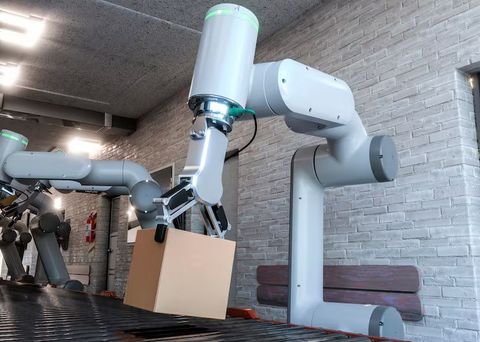
Industrial Automation and Robotics Explained: Fundamentals, Components, Trends and Practical Understanding
Industrial automation and robotics refer to the use of control systems, machines, and software to operate industrial processes with minimal human involvement. The primary aim is to enhance accuracy, reliability, and productivity across various manufacturing and industrial environments. Over time, industries moved from manual production to automated systems because machines can handle repetitive, complex, or hazardous tasks more efficiently.
Automation systems rely on control technologies such as Programmable Logic Controllers (PLC), Supervisory Control and Data Acquisition (SCADA), Distributed Control Systems (DCS), and Human-Machine Interfaces (HMI). Robotics involves using programmable mechanical devices designed to carry out physical tasks, including assembly, welding, packaging, inspection, and material handling.
This field emerged to reduce variations caused by human limitations and to achieve consistent output. With technological advancements like Industrial Internet of Things (IIoT), artificial intelligence (AI), machine vision, and cyber-physical systems, automation has evolved into what is known today as Industry 4.0 or smart manufacturing.

Importance
Industrial automation and robotics hold significant value in modern industries because they contribute to operational stability and quality improvement. They impact various sectors such as automotive, electronics, pharmaceuticals, textiles, logistics, and energy production.
Key reasons why automation matters include:
-
Improved Precision: Automated systems minimize human error, ensuring uniform product quality.
-
Higher Productivity: Machines work continuously without fatigue, resulting in increased output.
-
Enhanced Safety: Robotics can perform high-risk tasks in environments with heat, radiation, chemicals, or heavy loads.
-
Energy and Resource Efficiency: Optimized control systems reduce waste and improve resource utilization.
-
Process Monitoring: Data collected from sensors and control systems helps with real-time monitoring and decision-making.
Automation also supports predictive maintenance, where systems use analytics to forecast when equipment needs servicing. This prevents unexpected breakdowns and improves the lifecycle of machinery.
Recent Updates and Trends (2024–2025)
The past few years have seen significant developments in automation and robotics, driven by digitalization and smart factory adoption.
-
Rise of Collaborative Robots (Cobots):
Cobots are designed to work safely alongside humans. According to industry reports in 2024, cobot usage increased due to their flexibility in small and medium-scale production lines. -
AI-Driven Production Planning:
Machine learning models are now being integrated to analyze production data and automate decision-making processes, improving scheduling and ongoing optimization. -
5G Integration in Industrial Networks:
Since 2023-2024, several manufacturing zones have started adopting 5G-enabled automation systems to support fast, high-volume data communication for robotics and sensor networks. -
Growth of Autonomous Mobile Robots (AMRs):
Warehouses and logistics centers are increasingly using AMRs for transportation of materials, improving workflow efficiency. -
Sustainability Focus:
Automation platforms are incorporating energy monitoring to meet environmental compliance and reduce carbon emissions in industrial activities.
Laws, Policies, and Regulatory Considerations
Government policies influence how industries adopt automation and robotics, particularly in areas of safety, standards, and technology deployment.
-
Industrial Safety Regulations:
Regulations require safety guards, emergency stops, and risk assessments for machines and robotic work cells to protect worker well-being. -
Data Security and Privacy:
With interconnected factory systems, data governance frameworks ensure protection of operational and analytical data. -
Environmental Compliance:
Pollution control standards influence how automation technologies are used to reduce emissions and optimize resources. -
Skill Development Initiatives:
Many regions have introduced workforce training programs to support learning in automation, robotics programming, mechatronics, and digital manufacturing.
Policies differ by country, but the overall goal is to encourage innovation while ensuring safe and responsible deployment of automation technologies.
System Components and Operational Understanding
Automation systems contain multiple interconnected elements that function together to manage industrial processes.
| Component | Primary Function | Example Use Cases |
|---|---|---|
| PLC (Programmable Logic Controller) | Controls machines and process sequences | Assembly lines, conveyor operation |
| Sensors and Actuators | Detect physical changes and perform movements | Temperature control, motion handling |
| SCADA System | Monitors and supervises large-scale processes | Power plants, chemical manufacturing |
| Industrial Robots | Execute mechanical tasks with programmed instructions | Welding, packaging, spraying |
| HMI (Human-Machine Interface) | Allows operators to interact with machines | Machine setting adjustments |
| Communication Networks | Enable data exchange and coordination | Ethernet, industrial fieldbus, wireless systems |
Automated systems operate through feedback loops where sensor data is analyzed, decisions are made by the controller, and actions are executed by actuators or robots. In advanced systems, data flows to cloud platforms for analytics and optimization.
Tools and Resources
Helpful platforms and resources that relate to automation and robotics include:
-
Simulation and Modeling Tools: MATLAB, Simulink, Siemens Tecnomatix
-
PLC Programming Software: TIA Portal, RSLogix, GX Works
-
Robotics Programming Tools: ROS (Robot Operating System), ABB RobotStudio, FANUC ROBOGUIDE
-
Monitoring and SCADA Platforms: Ignition SCADA, Wonderware, WinCC
-
Knowledge and Training Sources: IEEE Xplore, Coursera robotics learning tracks, manufacturer documentation portals
These tools assist with planning, design, testing, monitoring, and skill development in automation environments.
FAQs
What is the main difference between automation and robotics?
Automation refers to systems that control processes, while robotics specifically involves mechanical devices performing physical movements or tasks.
Can small industries adopt automation?
Yes, automation can be scaled to different operation sizes. Modular automation and collaborative robots are often used in smaller production settings.
Are humans still needed in automated industries?
Yes. Humans are essential for supervision, programming, maintenance, system decision-making, and oversight of automated equipment.
What is Industry 4.0?
Industry 4.0 is the integration of smart digital technologies—such as IoT, cloud computing, analytics, and AI—into industrial manufacturing processes.
How does predictive maintenance work?
Predictive maintenance uses sensor data and analytics to determine when equipment will need servicing, helping prevent downtime.
Conclusion
Industrial automation and robotics represent a significant shift in how industries operate, aiming to enhance efficiency, accuracy, safety, and sustainability. As the global movement toward digital and smart manufacturing continues, interconnected machines, intelligent systems, and collaborative robotics will play an increasingly central role. Understanding the fundamentals, system components, technological trends, and regulatory context provides a foundation for appreciating how automation shapes modern industry.






